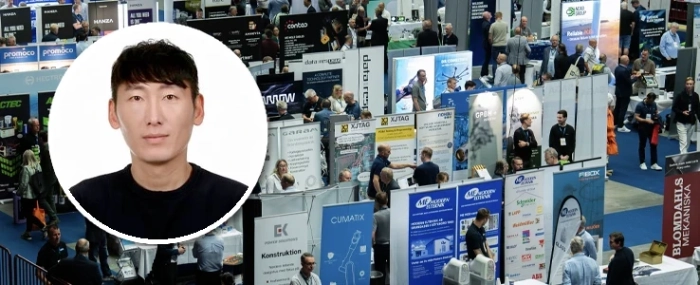
Dust, water and radar – a hidden threat to autonomous vehicle reliability
A key challenge in autonomous driving technology – how dust and moisture contaminants impair the reliability of automotive radar sensors – will be in focus during a presentation by Jeongmin Kang, Postdoctoral Researcher at Halmstad University, at the upcoming Evertiq Expo Malmö on May 15, 2025.
In his presentation during the Expo, titled “Effects of dust and moisture surface contaminants on automotive radar sensor frequencies”, Kang will discuss the results of a study designed to investigate how surface contamination impacts radar performance in real-world driving conditions.
“Various types of contamination can occur on the sensor surface,” he tells Evertiq. “However, numerous studies have primarily focused on the interaction between water and radar. Depending on the sensor’s mounting position on the vehicle, contamination on the sensor surface may result from airborne particles, substances originating from the road or adverse weather conditions. To assess the impact of such contaminants on sensor performance, we designed this work.”
The study used a range of advanced measurement tools—including a 76–81 GHz radar sensor, a 72–82 GHz automotive radome tester, and a 60–90 GHz vector network analyser—to test radar signal behaviour through a polypropylene surface treated with varying combinations of water and ISO standard dust. The results point to a significant issue:
“Our experimental results indicate that a combination of dust and moisture leads to greater radar signal attenuation compared to dust alone, highlighting the significant impact of moisture/water on radar signal integrity.”
As automotive radar sensors play a central role in the perception systems of autonomous vehicles, ensuring their functionality in all weather and road conditions is critical. Kang emphasises the practical implications of his findings:
“It is evident that the degree of contamination varies depending on the sensor’s mounting position on the vehicle. When combined with an analysis of the type and extent of surface contamination in challenging driving environments, these findings could provide valuable insights for optimising sensor placement in the design of autonomous vehicle systems.”
As automotive radar becomes increasingly critical for autonomous systems, how urgently does the industry need to address surface contamination as a reliability risk?
“To achieve fully autonomous driving systems, we aim to avoid even minor sensor inaccuracies. Surface contamination adversely affects normal sensor performance. Therefore, I believe that quantitative analysis and understanding of this impact are essential steps toward realising a reliable, fully autonomous driving system,” Jeongmin Kang concludes.
Jeongmin Kang will take to the stage to provide a deep dive into the impact of dust and moisture on radar sensor performance during Evertiq Expo Malmö on May 15. His work serves as a critical reminder that even small environmental factors, like the type of grime that sticks to a car's bumper, can have large implications for the future of vehicle automation.
